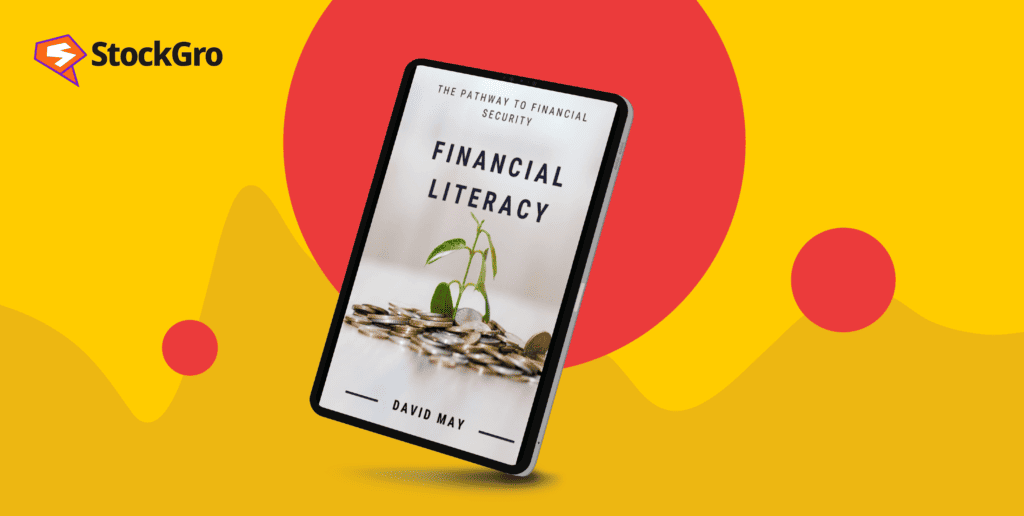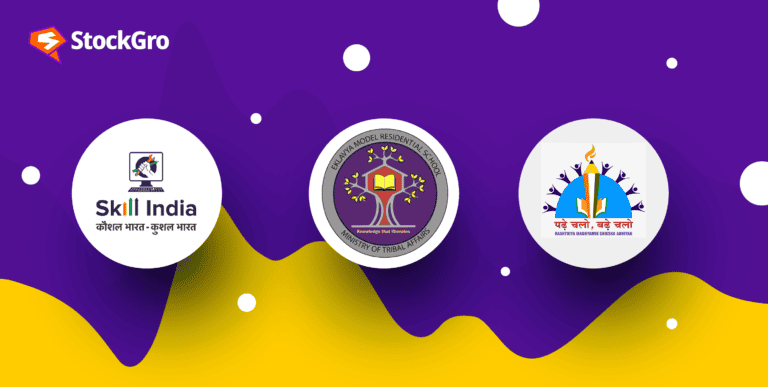
Do you have a habit of saving money regularly? Do you know how to make a budget? Do you have a clear plan for achieving your financial goals?
Financial literacy or money management is unquestionably the need of the hour. Many people work hard to earn but are unsure how to save and grow their money. In India, the pursuit of financial freedom is common, but many folks lack basic know-how about concepts like saving, compounding, insurance, etc.
You would be surprised to know that in India, only 27% of people-are financially literate, i.e., only one in five people can handle crucial money matters.
This issue hinders the creation of a strong and accessible financial system in India. Undeniably, financial literacy is key to economic vitality. It gives people the power to make wise, responsible money choices and boosts their financial stability.
Worried? Don’t be. In this article, we’ll provide a few financial literacy PDFs that can help you get started!
Financial literacy: Need of the hour today?
Financial literacy, the ability to comprehend and manage personal finances, is an essential skill that helps you understand and control your money. This ability can really change your financial outlook.
It involves skills like creating budgets, saving up, investing wisely, borrowing safely, and planning ahead. If you are good with money, it brings freedom and security. Plus, you can handle any financial bumps confidently.
Bear in mind that these financial literacy basics skills don’t just come naturally. They need to be nurtured from childhood. Those good with money not only protect their future but also avoid scams.
However, India is still far behind when it comes to financial literacy. Schools and parents often do not teach kids about money management.
So, the first place to learn about money? That’s home. Parents should guide their kids about handling finances. Besides, schools need to adapt their teaching plans. They should build this topic into their curriculum to allow children to make financially wise decisions as they become adults.
Before a student finishes school, they should know about investing, the stock market and budgeting strategies.
Thus, here comes the importance of financial literacy PDF. Apart from classroom training and videos, you can also refer to financial literacy books PDF to gain a better understanding.
You may like: What is a budget – A beginner’s guide
Top financial literacy books in PDF format
There are many sources of financial literacy PDFs, such as government agencies, educational institutions, non-profit organisations, and private companies.
If you are looking for some great financial literacy books in PDF format, some of them are:
- Rich Dad Poor Dad by Robert Kiyosaki
- The Richest Man In Babylon by George S. Clason
- The Intelligent Investor by Benjamin Graham
- I Will Teach You to Be Rich by Ramit Sethi
- Think And Grow Rich by Napoleon Hill
Must read: What is personal finance, and why is it important?
Financial literacy: Initiatives
Apart from financial literacy books PDF, various financial sector regulators like RBI and SEBI have also taken steps to promote financial education and awareness.
In 2017, RBI started a program, “Project Financial Literacy,” to impart financial literacy basics to students, women, those in urban and rural areas, etc.
RBI’s main focus has been on financial education and inclusion, and for that, it has put together a lot of written material in 13 languages. These financial literacy PDFs are available on their website. Their primary motive is to help the users become financially literate.
Apart from that, the RBI has also released a third FAME (Financial Awareness Messages) booklet out in PDF form. It covers four main topics: Financial Skills, Essential Banking, Going Digital, and Consumer Protection.
In 2019, the National Centre of Financial Education (NCFE) began the Financial Education Programme (FEPA) for adults. It is a program aimed at boosting financial knowledge among women, farmers, and self-help groups. They have uploaded many PDFs, beneficial for people in various job sectors.
SEBI has also introduced measures like investor awareness sessions, regional seminars, and a dedicated investor website. All these will aid in enhancing everyone’s understanding of financial matters.
Also read: SIP investment: Your path to wealth building
Financial literacy for students: PDFs
For financial literacy, it’s essential to grasp basic financial topics as a student.
SEBI, RBI and CBSE have taken different initiatives and offered various PDFs to help students gain a better understanding.
For instance, RBI offers a detailed financial literacy PDF for students to gain an understanding of financial concepts.
Further, SEBI, along with the National Institute of Securities Markets (NISM), offers a workbook named “Pocket Money” to help students become financially literate. The primary motive is to make the students understand the concepts of budgeting, saving, and investing.
Central Board of Secondary Education (CBSE) and the National Payments Corporation of India (NPCI) have also joined forces to create a financial literacy curriculum for sixth graders, enabling them to understand fundamental financial concepts from a young age. This is a positive development! They offer a PDF for that, which makes learning more fun and easy.
Furthermore, in accordance with the NEP (National Education Policy), several forward-thinking schools have implemented Financial Literacy Programs across all grades.
Bottomline
Understanding finance is not a static notion; it’s a continuous process that requires constant learning and adaptation. So, utilise resources at your disposal, such as books, PDFs, articles, e-learning platforms, and seminars to expand your knowledge of finance.
Keep yourself updated with the newest economic trends, upcoming financial products, and regulatory updates to make wise decisions.
Happy learning!

